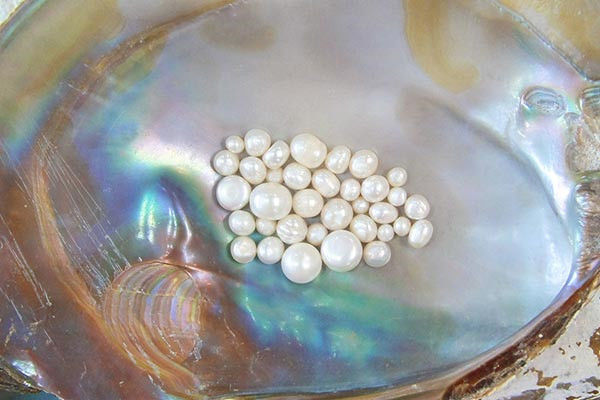Pearl Knowledge
Pearls, natural or cultured, are formed when a mollusk produces layers of nacre around some type of irritant inside its shell. In natural pearls, the irritant may be another organism from the water. In cultured pearls, a mother-of-pearl bead or a piece of tissue is inserted (by man) into the mollusk to begin the process. The quality of acre dictates the quality of the luster or shine of the pearl. Which in turn, determines the pearls beauty and value. The surface of the pearl should be smooth and free of marks while the overall shape could be round, oval, pear-shaped, or misshapen (baroque pearls).
Natural pearls are extremely rare today, as most have been harvested. These are the most costly and rare pearls in the world. Cultured pearls are what the market boasts. These pearls are raised in pearl farms. They can be found in both saltwater and freshwater. An interesting fact is that not all pearls that are produced are high quality. Over 10,000 pearls may have to be sorted until a matched pearl is found.
Saltwater pearls include the Akoya cultured pearls grown in Japanese and Chinese waters. They are usually white or cream in color and round in shape. Australia, Indonesia, and the Philippines produce the South Sea pearl. These are the largest of all the pearls. They can be naturally white, cream, or golden in color. Tahitian pearls are not exclusively from Tahiti, they are grown on several of the islands of French Polynesia, including Tahiti. These naturally colored pearls include gray, blue, green, and purple.
Freshwater pearls are grown primarily in Chinese waters. These pearls are predominantly white but are also found in different shades of pastels.
Have any queries? Feel Free To Contact Us.



